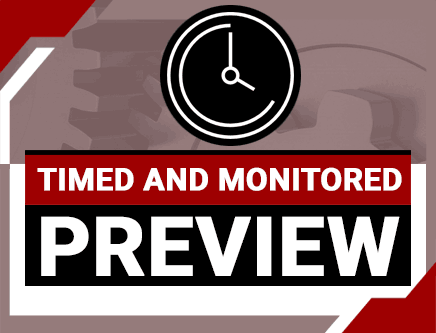How Things Break: The Versailles Rail Accident and Early Work In Metal Fatigue (Ohio Timed & Monitored Video)
Credit: 1 PDH
Subject Matter Expert: Raymond M. Burynski, Jr., P.E.
In How Things Break: The Versailles Rail Accident and Early Work In Metal Fatigue , you'll learn ...
- Why the Versailles incident was important for the study of fatigue
- Fatigue design philosophies, and how they were implemented on the early railroads
- The influence of early fatigue research
Overview

To meet the Ohio Board's intent that online courses be "paced" by the provider, a timer will be used to record your study time. You will be unable to access the quiz until the required study time of 56 minutes has been met.
Credit: 1 PDH
Duration: 56 minutes
On May 8, 1842, a horrible train wreck near Meudon, France would claim dozens of lives. This would become known as the Versailles Rail Accident, and was a watershed moment in the history of metal fatigue. Prior to this event, metal fatigue was a relatively invisible phenomenon, often resulting in little more than economic losses and inconvenience.
This course explores the engineering history and legacy of the Versailles Rail Accident. The rotating beam test, S-N diagrams, and various fatigue design philosophies all have their roots in this and other early events. Emphasis is placed on understanding these in context of the Versailles accident and subsequent work.
This video is a recording of a live webinar training session. As a recording of a live event, you will hear the discussion that occurred between the instructor and those who attended this webinar.
Specific Knowledge or Skill Obtained
This course teaches the following specific knowledge and skills:
- An overview of the fatigue process
- How fatigue failures became more prevalent in the 1800s
- Why the Versailles incident was important for the study of fatigue
- The current prevalence of fatigue failures
Certificate of Completion
You will be able to immediately print a certificate of completion after passing a multiple-choice quiz consisting of 10 questions. PDH credits are not awarded until the course is completed and quiz is passed.
| This course is applicable to professional engineers in: | ||
| Alabama (P.E.) | Alaska (P.E.) | Arkansas (P.E.) |
| Delaware (P.E.) | District of Columbia (P.E.) | Florida (P.E. Area of Practice) |
| Georgia (P.E.) | Idaho (P.E.) | Illinois (P.E.) |
| Illinois (S.E.) | Indiana (P.E.) | Iowa (P.E.) |
| Kansas (P.E.) | Kentucky (P.E.) | Louisiana (P.E.) |
| Maine (P.E.) | Maryland (P.E.) | Michigan (P.E.) |
| Minnesota (P.E.) | Mississippi (P.E.) | Missouri (P.E.) |
| Montana (P.E.) | Nebraska (P.E.) | Nevada (P.E.) |
| New Hampshire (P.E.) | New Jersey (P.E.) | New Mexico (P.E.) |
| New York (P.E.) | North Carolina (P.E.) | North Dakota (P.E.) |
| Ohio (P.E. Timed & Monitored) | Oklahoma (P.E.) | Oregon (P.E.) |
| Pennsylvania (P.E.) | South Carolina (P.E.) | South Dakota (P.E.) |
| Tennessee (P.E.) | Texas (P.E.) | Utah (P.E.) |
| Vermont (P.E.) | Virginia (P.E.) | West Virginia (P.E.) |
| Wisconsin (P.E.) | Wyoming (P.E.) | |


 Live support chat
Live support chat


